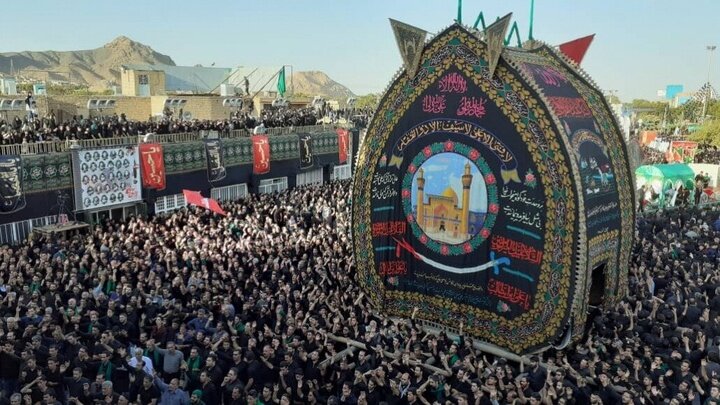Muharram: a global scene, an Iranian narrative

TEHRAN — With the arrival of Muharram, the Iranian cultural calendar takes on a different color; rituals come to life, traditions are revived, and nations speak to each other in a common language called Ashura, extending beyond geographical boundaries.
Muharram is not only a religious ritual but also a medium through which Iran presents its humanitarian, spiritual, ethical, and justice-oriented face to the world in the form of arts, rituals, and popular participation, Miras Arya (CHTN) wrote.
Every year, Muharram ushers in a genuine manifestation of Shia culture. Countries like Iraq, Lebanon, Pakistan, India, Azerbaijan, Turkey, and even Shia communities in Europe and North America resonate with Iran through similar rituals. This cultural harmony has formed a direct diplomacy that has become one of the most important tools of Iran’s soft power.
Muharram is a mirror reflecting Iranian culture, art, history, literature, and customs. This mirror has also inspired other nations with different languages and traditions, who gather around a common message named “Hossein (A.S.).”
Cultural ties beyond borders
From the Arba’een pilgrimage in Iraq to mourning rituals in Karachi and Kashmir, from performances of Tazieh (passion plays) in Sarajevo and Berlin to Nakhl Gardani (palm-carrying) in Yazd and Tabas, the cultural ties resulting from Ashura have developed into an extensive network of human and historical relations across the Islamic world.
Iran has a prominent role as the center for producing and transferring these customs. The Iranian structure for mourning uses the language of art.
In recent decades, a significant part of global society, particularly in regional countries, has come to know Iran through its religious and cultural rituals during Muharram.
Muharram has become a tool for cultural collaboration and civilizational dialogue.
Tazieh
One of the brightest cultural symbols of Muharram in Iran is Tazieh performance, an art which is rooted in oral traditions but has been combined with theatrical, musical, dramatic and literary elements. Today, Tazieh is performed in cities like Paris, Rome, London, Istanbul, and Beirut in different languages adapted from the Iranian model. Tazieh performances are tools for introducing Shia culture and the epic spirit of Ashura, presented in an art form understandable to other nations.
Mookebs
Mookeb is a service center with a religious nature where Shia Muslims come together and conduct religious rituals during Arba’een. Iranian Mookebs are the other capacities of cultural diplomacy. Mookebs show Iranian-Islamic lifestyle, a style in which hospitality, simplicity, kindness, politeness, hospitality and respect for the pilgrim are at the highest possible level.
These processions have also had a positive impact among non-Iranian pilgrims. In public conversations, many pilgrims from Arab and even European countries mention the “Iranian processions” as the most memorable part of their trip; where they became familiar with Iranian culture, food, customs and manners.
In recent years, coverage of Iranian Muharram rituals in international media has increased significantly. Networks such as Al Jazeera, France 24, RT, and BBC Arabic have specifically covered the mourning processions, Nakhl Gardani (palm-carrying) ceremonies, Tazieh, and processions. In these media reports, Iran is presented as a country with a deep-rooted religious, spiritual, and popular culture. These narratives are in complete conflict with the negative portrayal of Iran by some Western media outlets.
KD
Leave a Comment